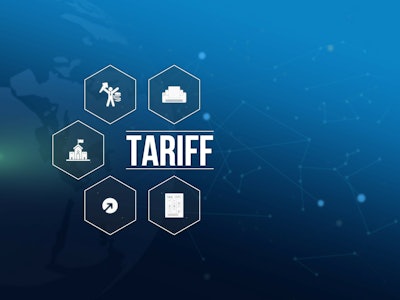
On Dec. 19, Mexico President Claudia Sheinbaum announced an increase in tariffs on textiles and apparel imports and ended the practice of “border-skipping,” wherein many U.S. e-commerce sellers leveraged nearshoring to avoid tariffs on Chinese goods. Under the loophole, importers could avoid these tariffs using the Section 321 provision and shipping to Mexican warehouses as fulfillment hubs for low-cost finished products that are then sent directly to U.S. consumers.
“The increased tariffs and cessation of duty-free imports puts apparel brands in a scramble to find alternative fulfillment solutions and consider shifting strategies from nearshoring via Mexico to reshoring their operations in the U.S.,” says Ryan Martin, president of Distribution and Fulfillment at ITS Logistics. “This is costing companies money today, and even if there is a postponement on tariffs, it’s not a winning strategy for companies to just wait and see what happens.”
The tariffs increased by 15% for textiles and up to 35% for finished apparel products. These are seen as a protective measure for the Mexican textile industry and to reduce imports from China, potentially avoiding trade conflicts with the U.S.
“We’ve already received an influx of referrals and inquiries from companies looking for someone who can help them pivot and offer them customized distribution solutions with immediate warehouse space in our U.S. facilities,” explains Martin. “Apparel distribution requires an exceptional amount of technical and operational expertise. There’s a difference between being able to do it fast and being able to do it right—fortunately, we do both.”
Key Takeaways:
- Before the Dec. 19 ban, apparel imports under the IMMEX (Manufacturing, Maquiladora, and Export Services Industry) program were given a “Made in Mexico” designation from U.S. Customs. CNBC’s Lori Ann LaRocco explored this loophole in depth with “How China is Using Mexico as a Backdoor to Avoid U.S. Tariffs,” broadcast on CNBC.com.
- Both Chinese companies and European companies that once manufactured products in China are now diversifying supply chains by manufacturing in Mexico, a trend that can be seen in the number of containers transporting Asian raw materials and components into the southern neighboring nation of the U.S. From January to August 2024, China to Mexico trade was up 22% year over year, on top of a 33% increase in trade in 2023. This trend contributed to the designation of Laredo, Texas, as one of the busiest ports in the U.S. in 2024.


![Pros To Know 2026 [color]](https://img.sdcexec.com/mindful/acbm/workspaces/default/uploads/2025/08/prostoknow-2026-color.mduFvhpgMk.png?auto=format%2Ccompress&bg=fff&fill-color=fff&fit=fill&h=100&q=70&w=100)







![Pros To Know 2026 [color]](https://img.sdcexec.com/mindful/acbm/workspaces/default/uploads/2025/08/prostoknow-2026-color.mduFvhpgMk.png?ar=16%3A9&auto=format%2Ccompress&bg=fff&fill-color=fff&fit=fill&h=135&q=70&w=240)








